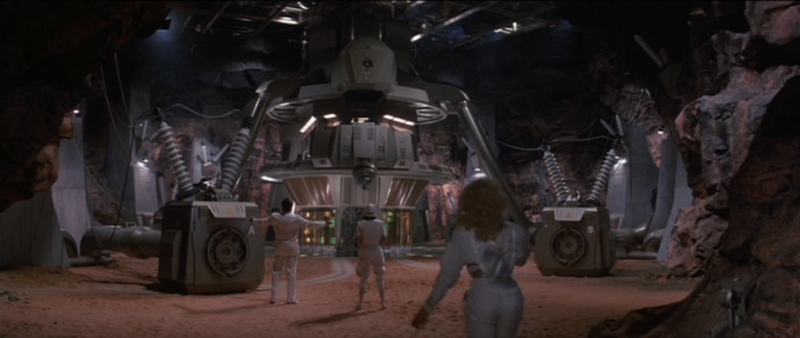Starglider wrote:
I'm a bit dubious on the utility of shielded racks in a compute application. I know you can get them for harsh industrial environments (lots of high-power motors putting out EMI), but that assumes you can fit all the sensitive equipment in one rack. If you have hundreds of 10G ethernet runs forming a mesh network, that is the biggest antennae and it is necessarily outside the racks.
You could still wrap a much smaller amount of mesh around the rack to rack cable runs, and not have the problem of being unable to attach anything to your walls because they are draped in this material. Also I'm just kind of suspecting that any contractor will try to charge you an insane markup to do this kind of installation, or else will have no idea what they are doing. If you use racks + possible cable shield all you need is a good ground, and you could take everything with you if you ever moved.
Cat 7 is double screened, but even still there are significant alien crosstalk concerns even with no external factors (in large cable bundles).
Ah but that was a point before of sorts, shielding the walls won't protect you from that. Some subdivided metal cable duct would help though. The amount of radiation that is going to get through a double rebar ceiling isn't going to be that high at that point.
The servers themselves have grounded casings complying with the usual EMI standards, although certainly some improvements could be made in the cooling openings etc. Still it is a sensible suggestion and I will see how expensive this is.
Can't hurt. Its a not irrelevant market, as most military and government stuff has gone to the rack approach as they no longer fear nukes as much as non nukes, and certainly a major commercial market exists too.
Initially, 25 kW as limited by the single phase electrical supply. That is a 256 mini servers, 64 medium servers, or 16 beefy servers. The most effective hardware setup for the power and acquisition budget is determined by (a) the relative efficiency of GPGPU vs CPU load (for the compute tasks of interest), (b) performance cost of parallelism at several different logical levels and (c) actual cost and spec of the hardware options, all of which change quite regularly.
I've never thought of single phase as a limit! I'm in the land of 120 safety volts and I work for people who have an extra electrical service just to run their hot water because their original service was maxed out by the central AC, and some other factors that are a tad retarded but can be summed up as 'utilities across other peoples properties suck'. Amazing house though, rare hawks in the backyard of a developed suburb are worth it. Couple USD a month extra for the second service charge.
I didn't actually look up the values but 25kw might really be pushing things, depending on just how hot you'll accept it running and worst case summers. I'm sadly drawing a blank on just which file it was has the figure I want to consult. Probably remember it while I'm at work inside the damn tower or something.
But look at it this way, I'm in a 13 foot wide two story + basement brick rowhouse in the US North East. My home heater, forced air twin gas burner, is rated at 80,000 BTU per hour. 25 KW is about 85,000 BTU an hour! That heater is very capable of keeping this place warm in in a 0 degree F winter, even with my 1950s level of insulation. And just by operating at all it keeps the basement nearly hot, and I have the basement vents all closed though of course the ductwork and the flue pipe run through it. You're talking about running such a thing constantly. not in bursts, in the summer. Some kind of powered vent seems very likely to be needed.
Airflow is not addressed on that initial plan. I was thinking 4 x inlets to floor level and 4 x outlets from ceiling level implemented via L-shaped 450mm precast concrete pipes from the basement level to ~50cm above exterior ground level (with weather caps), and grounded copper mesh screens at both ends. I would guess that forced ventilation is not necessary at 25 kW, but if it is the fans could be at the above-ground end of the pipe rather than in the server room; it would certainly be sensible to run power to the pipe caps for this eventuality.
I think running power to at least one is wise, no matter what the conduction math says, because heatwaves are a thing and humidity buildup could become a problem in its own right for short periods. It would also be useful for the resale value. I know building underground is a growing thing in the UK because EYESORES ect... so it wouldn't help to plan ahead for when you go senile and any children and or mutant alien sheep dependents need to rid your estate of this monstrosity. Also a powered vent would also give you the option of using a dust filter on the vent, which depending on how built up the area is, might be useful to keep all the computers cleaner.
Oh and make sure they give that planter a bottom slope and proper drainage! Several years of my life were partly spent fixing drainage problems caused by professionals with no common sense. Ever seen a french drain installed at the bottom of a downspout with underground run off pipe?
"This cult of special forces is as sensible as to form a Royal Corps of Tree Climbers and say that no soldier who does not wear its green hat with a bunch of oak leaves stuck in it should be expected to climb a tree"
— Field Marshal William Slim 1956












